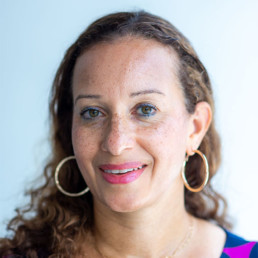
Written by Caroline Davis
Caroline Lucy Davis, International English Teacher & Diversity, Equity and Inclusion Advocate with a particular interest in the intersection of gender and race.
This article, which was presented at the AIELOC (Association of International Educators and Leaders of Colour) online conference 2019, discusses my experience of working on DEI initiatives where there was evidence of clearly inauthentic and tokenistic practice to achieve certain targets and tick box exercises. My journey is one of discovery to disruption to learning and exiting one educational organisation’s version of cultural relations and DEI work.
I became a member of my organisations DEI team and discovered a fractured, non-communicative, barely functioning group receiving very little guidance. If I examine my reasons for seeking out the team at the time I did, it is really quite simple and why others may do the same. I was struggling with certain issues surrounding gender in particular and I wanted an outlet. I would later learn that I was certainly not alone in my experiences. My experiences also resurfaced my long-term interest in social issues and experiences of marginalisation. I found the lack of initiative and direction of the DEI team very infuriating and was keen to move things forward.
So I found other ways to impact DEI initiatives through external volunteering opportunities sometimes connected to the organisation. I joined local and expatriate women’s groups, ran International Women’s Day events and was involved in a Global Race and Culture Working group. I networked internationally and it was this extending of my circle which was very enlightening and liberating for me. After quite some time of learning and leading more these initiatives, as well as feeling frustrated by the lack of movement on issues, I became lead for the DEI team. Excited, I threw myself into my new shiny (unpaid!) role in an area that I felt passionately about.
I researched and thought carefully about how I would establish a representative team and one that would work on the areas of EDI that mattered most, and were most pressing to the staff. My team was going to be functional and effective! I read about how to have inclusive meetings and communication, as I had been long-term recipient of the opposite at the organisation. I had become used to hearing the same old dominant voices and seeing the same old faces…those faces that were all so similar to one another.
Working conditions did not make communication, meetings, organising events or initiatives easy, and then there were the office and organisational politics. Despite the challenges and we had some successful, if with less attendance than hoped, events and initiatives.
At the same time, the idea of a microcosm became apparent to me when discussing issues even within the EDI team. We just did not seem to have the same understanding or experience of things. Could the EDI team, as representative of the wider organisation, be part of the problem? I indeed found clearly inauthentic and tokenistic practice to achieve certain targets and tick box exercises and even found my work accredited to someone else.
After delivering a presentation on racism in the UK and the lack of people of colour at senior leadership in the organisation, a manager approached me to say they had never noticed any racism and that was why they were so proud to work for the organisation. It was alarming that evidence can be so clearly under one’s nose, but remain unseen. Do we need to see racist acts to figure out that racism must be at play if there are no people of colour at senior leadership levels?
Clearly DEI teams can be unhealthy microcosms of wider organisations, just as classrooms, offices, schools, organisations can be unhealthy microcosms of wider society. So how do we journey through and learn from the process to inform future practice.
In my experience, the learning is the work and it is as rich, as it is exhausting. Keep a record of what you learn and how you learnt it. Seek out opportunities and reach out to the wider network. Stretch your microcosm bubble, perhaps you can burst it! By expanding my network and volunteering, I came to understand that there is a bigger world out there and people who see what you see, and want to make a genuine difference. I learned a great deal and despite the apparent silence, I believe I did disrupt things. I had felt invested and at the same time captive there and in the end decided that it was best for me to exit that educational organisation’s very outdated version of cultural relations and DEI work. This is how to journey through, learn from the process in order to inform your future practice.

